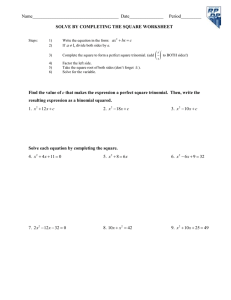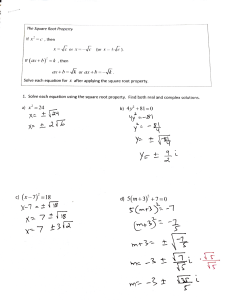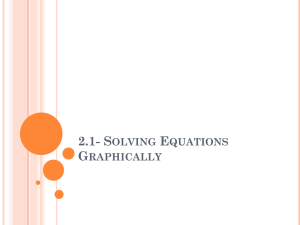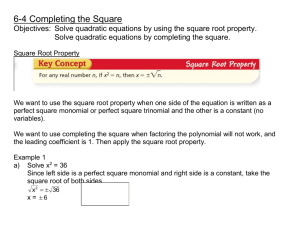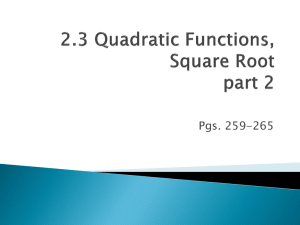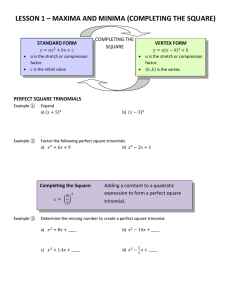WS - Completing the Square
advertisement
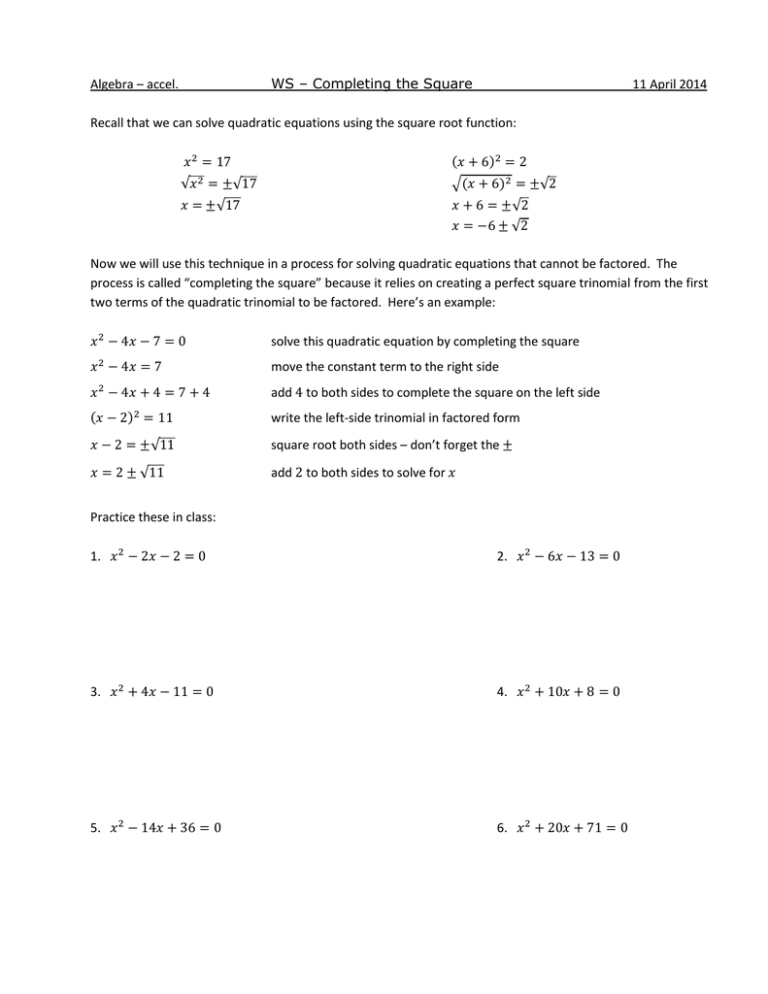
WS – Completing the Square Algebra – accel. 11 April 2014 Recall that we can solve quadratic equations using the square root function: 𝑥 2 = 17 (𝑥 + 6)2 = 2 √𝑥 2 = ±√17 √(𝑥 + 6)2 = ±√2 𝑥 = ±√17 𝑥 + 6 = ±√2 𝑥 = −6 ± √2 Now we will use this technique in a process for solving quadratic equations that cannot be factored. The process is called “completing the square” because it relies on creating a perfect square trinomial from the first two terms of the quadratic trinomial to be factored. Here’s an example: 𝑥 2 − 4𝑥 − 7 = 0 solve this quadratic equation by completing the square 𝑥 2 − 4𝑥 = 7 move the constant term to the right side 𝑥 2 − 4𝑥 + 4 = 7 + 4 add 4 to both sides to complete the square on the left side (𝑥 − 2)2 = 11 write the left-side trinomial in factored form 𝑥 − 2 = ±√11 square root both sides – don’t forget the ± 𝑥 = 2 ± √11 add 2 to both sides to solve for 𝑥 Practice these in class: 1. 𝑥 2 − 2𝑥 − 2 = 0 2. 𝑥 2 − 6𝑥 − 13 = 0 3. 𝑥 2 + 4𝑥 − 11 = 0 4. 𝑥 2 + 10𝑥 + 8 = 0 5. 𝑥 2 − 14𝑥 + 36 = 0 6. 𝑥 2 + 20𝑥 + 71 = 0 Homework: Solve these quadratic equations by completing the square: 7. 𝑥 2 − 10𝑥 + 23 = 0 8. 𝑥 2 − 2𝑥 − 9 = 0 9. 𝑥 2 + 6𝑥 + 4 = 0 10. 𝑥 2 + 2𝑥 − 5 = 0 11. 𝑥 2 − 8𝑥 + 5 = 0 12. 𝑥 2 + 12𝑥 + 17 = 0 13. 𝑥 2 − 10𝑥 − 6 = 0 14. 𝑥 2 − 20𝑥 − 81 = 0 15. 𝑥 2 + 16𝑥 + 34 = 0 16. 𝑥 2 + 24𝑥 + 111 = 0
